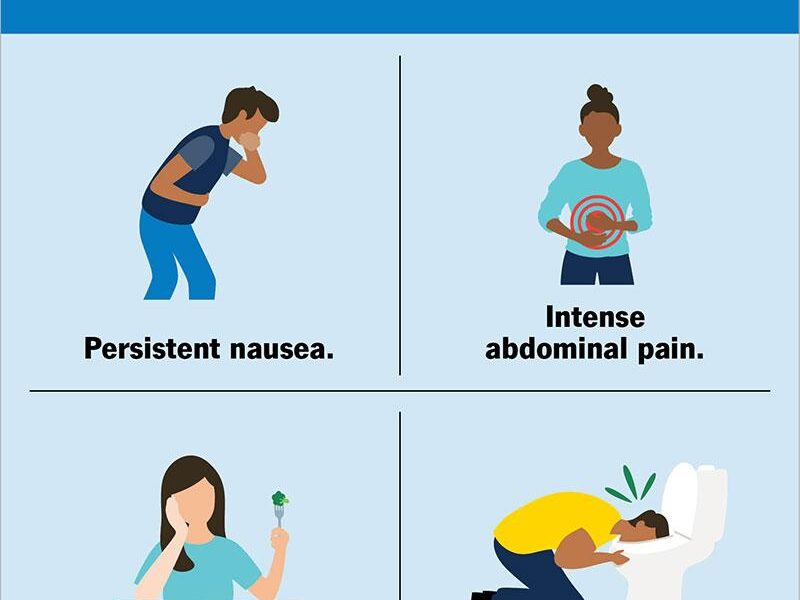As the sun dips below the horizon and the evening air fills with a sense of relaxation, many find solace in the ritual of smoking weed. Whether used for medicinal purposes or recreational enjoyment, cannabis has woven its way into the fabric of contemporary culture. However, like any substance, it carries with it a unique array of effects that can be both intriguing and perplexing. Understanding the symptoms associated with smoking weed is essential for anyone navigating this complex world. In this article, we’ll explore the diverse range of experiences one might encounter, from the euphoric highs to the subtle shifts in perception, offering a comprehensive look at what it truly means to partake in this age-old practice. Join us as we unravel the intricacies of cannabis and its impact on the body and mind.
Table of Contents
- Understanding the Immediate Effects of Marijuana Consumption
- Recognizing Long-Term Implications on Mental Health
- Exploring Physical Symptoms and Their Management
- Practical Tips for Responsible Use and Harm Reduction
- Q&A
- Concluding Remarks
Understanding the Immediate Effects of Marijuana Consumption
The effects of marijuana consumption can vary greatly from person to person, but several immediate symptoms are commonly reported. Upon inhalation, many users experience a quick onset of sensations that can be both pleasant and disorienting. Common effects include:
- Euphoria: A heightened mood and sense of happiness, often referred to as a “high.”
- Altered Perception: Changes in sensory perception, such as enhanced colors, sounds, and tastes.
- Relaxation: A soothing sensation that may lead to a feeling of tranquility or sleepiness.
- Increased Appetite: Often dubbed the “munchies,” a strong desire to eat, particularly snack foods.
However, not all experiences are entirely positive. Some users may encounter adverse effects that can dampen their enjoyment of marijuana. These less desirable symptoms can include:
- Anxiety: Heightened feelings of panic or nervousness, particularly in inexperienced users.
- Dizziness: A sensation of lightheadedness that may lead to a sense of imbalance.
- Paranoia: An intense feeling of unease or suspicion that can create discomfort.
- Dry Mouth: Often referred to as “cottonmouth,” a common occurrence that can be remedied with hydration.
Recognizing Long-Term Implications on Mental Health
While the immediate effects of cannabis may seem benign or even enjoyable to some users, the long-term implications on mental health can be much more profound. Regular consumption can lead to issues such as anxiety, depression, and, in certain cases, cognitive impairments. These symptoms may manifest as:
- Increased anxiety levels: Users may find themselves experiencing heightened anxiety during and after use.
- Emotional instability: Mood swings or emotional detachment can become more pronounced.
- Withdrawal symptoms: Particularly in chronic users, the absence of cannabis might trigger irritability and restlessness.
Furthermore, it’s essential to recognize that the frequency and context of use can intensify these effects. For instance, using cannabis as a coping mechanism for stress often leads to an unhealthy dependency, making it difficult for individuals to tackle their underlying issues. A simple overview of the potential mental health implications illustrates this connection:
| Implication | Description |
|---|---|
| Chronic Anxiety | Persistent feelings of worry and fear. |
| Depression | Feelings of sadness and loss of interest in daily activities. |
| Cognitive Decline | Memory and learning difficulties over time. |
Exploring Physical Symptoms and Their Management
When indulging in the consumption of cannabis, users often experience a variety of physical symptoms, many of which can be temporary but may still require management. Some common physical effects include:
- Dry mouth: Known as ‘cottonmouth,’ this sensation can be uncomfortable but is often relieved by consuming water or herbal teas.
- Red eyes: Caused by the dilation of blood vessels, eye drops specifically designed for redness can provide immediate relief.
- Increased heart rate: While usually not dangerous for healthy individuals, managing this symptom can involve practicing deep breathing to promote relaxation.
- Coordination issues: Impaired motor skills may occur, so activities such as driving should be avoided until the effects wear off.
Furthermore, users may also encounter less common symptoms that require more focused management strategies. Consider the following:
| Symptom | Management Strategies |
|---|---|
| Anxiety | Engage in calming activities like meditation or gentle exercise. |
| Paranoia | Ensure a safe and familiar environment; talk with friends. |
| Fatigue | Take short naps or rest in a comfortable setting. |
In addressing these symptoms effectively, individuals can enhance their overall experience with cannabis, ensuring a more pleasant and manageable encounter.
Practical Tips for Responsible Use and Harm Reduction
Understanding the effects of cannabis can enhance your experience and help you make informed choices. Engaging in responsible use entails being aware of your own limits and the context in which you choose to partake. Here are some practical measures to consider:
- Start Low and Go Slow - If you’re new to cannabis or trying a different strain, begin with a small amount to gauge how it affects you.
- Stay Hydrated – Keep plenty of water on hand, as cannabis can often lead to dryness of the mouth and dehydration.
- Know Your Setting – Choose a comfortable environment, ideally surrounded by supportive friends or in a familiar place.
- Mind Your Mindset - Your mental state going into the experience can significantly influence how you feel; aim for positive vibes.
Harm reduction also emphasizes understanding potential side effects and preparing for them. For cannabis users, being aware of symptoms can guide better choices. Here’s a simple reference to understand common reactions:
| Symptom | Possible Solution |
|---|---|
| Dry Mouth | Drink water or consume hydrating foods. |
| Anxiety | Practice deep breathing or meditate. |
| Increased Heart Rate | Find a calm space to rest while breathing deeply. |
Q&A
Q&A: Understanding the Symptoms of Smoking Weed
Q1: What are some immediate symptoms experienced after smoking weed?
A1: When a person smokes weed, they may experience a variety of immediate symptoms, which can include a heightened sense of euphoria, relaxation, and an altered perception of time and space. Some people report an increase in sociability or a bout of giggles, while others may feel a more introspective mood. Additionally, common physiological symptoms can include dry mouth, red eyes, and an increased appetite, famously known as “the munchies.”
Q2: Are there any cognitive effects associated with smoking weed?
A2: Yes, smoking weed can lead to noticeable cognitive effects. Users often describe shifts in their focus and memory; short-term memory loss can be particularly acute, making it challenging to recall recent events or conversations. Some might also experience a slowed reaction time or impaired judgment, which can affect decision-making abilities temporarily.
Q3: Can smoking weed cause anxiety or paranoia?
A3: Interestingly, while many individuals use cannabis to relieve anxiety, some may experience heightened symptoms instead. The THC in marijuana can lead to feelings of anxiety or paranoia during or after use, especially in novices or those predisposed to anxiety disorders. This unpredictable response varies from person to person and can be influenced by the strain of cannabis and the individual’s mindset.
Q4: How does the method of consumption impact symptoms?
A4: The method of consumption—whether smoking, vaping, or edibles—does significantly impact the symptoms experienced. Smoking or vaping delivers THC quickly into the bloodstream, leading to rapid onset of effects, generally within minutes. In contrast, edibles, which need to be digested, can produce effects that take longer to begin—often up to two hours—but they tend to be more intense and longer-lasting, sometimes leading to overwhelm.
Q5: Are there any long-term symptoms of regular cannabis use?
A5: Long-term cannabis use can lead to a range of symptoms, which may include persistent changes in mood, memory issues, and potential dependency. Some regular users report a decline in motivation or an overall diminished interest in activities that once brought joy, often referred to as “amotivational syndrome.” It’s worth noting, however, that research is ongoing, and the long-term effects can vary widely among individuals.
Q6: Can smoking weed impact physical health?
A6: Yes, smoking weed can have physical health implications similar to those associated with tobacco use, including respiratory issues such as bronchitis or chronic coughing. It’s also linked to an increase in heart rate, which can be concerning for individuals with pre-existing heart conditions. As with any substance, moderation and awareness of body signals are key.
Q7: What should someone do if they experience negative symptoms after smoking weed?
A7: If negative symptoms occur, such as extreme anxiety or disorientation, the best course of action is to remain calm and find a comfortable and safe environment. Hydration can help alleviate dry mouth, while snacking can counteract the heightened effects of THC. In severe cases of panic or paranoia, sitting with a trusted friend or familiar person can provide comfort until the symptoms subside.
Q8: Is it possible to distinguish symptoms based on the strain of cannabis?
A8: Absolutely! Different strains of cannabis contain varying concentrations of THC and CBD, as well as other cannabinoids and terpenes that influence effects. Indica strains are generally associated with relaxation and sleepiness, while sativa strains tend to produce more uplifting and energizing effects. Hybrid strains can exhibit a mix of these characteristics, so understanding the strain can certainly help users anticipate potential symptoms.
Understanding the spectrum of symptoms related to smoking weed can empower individuals to make informed choices. By recognizing these effects, users can better navigate their experiences and manage their intake for a more enjoyable encounter with cannabis.
Concluding Remarks
understanding the symptoms of smoking weed is vital for making informed choices about its use. From the initial euphoria and heightened senses to the more subtle nuances like altered perception of time and increased appetite, the effects can vary widely among individuals. As with any substance, awareness of these symptoms not only helps in recognizing personal experiences but also fosters open conversations about cannabis use and its implications. Whether approached with curiosity, caution, or a blend of both, navigating the landscape of marijuana requires a balanced perspective, underscoring the importance of education and personal reflection. As you explore this multifaceted world, remember to prioritize your well-being and stay informed.


